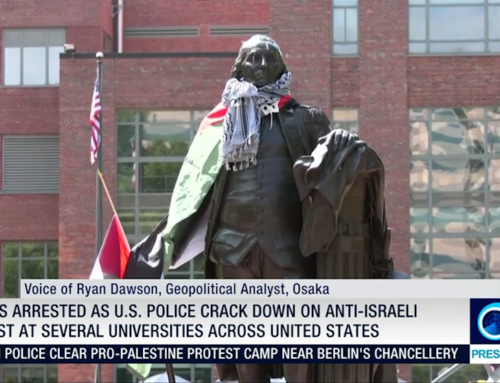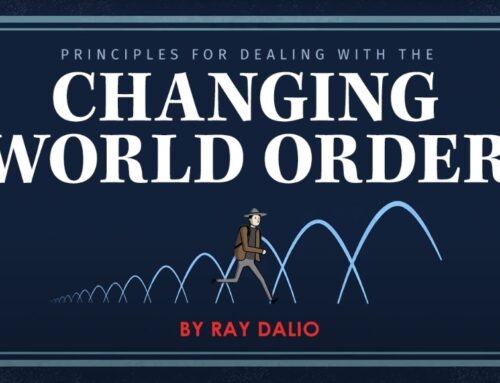The Worst Humanitarian Crisis In the World Was Also The US’s Worst Foreign Policy Decision In A Decade 5 December 2019 
The Saudi/UAE coalition and its western backers in the US/UK have recently faced a reality check. There is no way to dislodge Ansar Allah (the Houthis) from Northern Yemen, and their misguided attempts to restore Hadi to power have increased Houthi military capabilities and have driven the Houthis closer to Iran. There has been an on and off ceasefire in Al Hudaydah for the better part of a year, and recently the Houthis and the Saudi Coalition entered indirect peace talks that were brokered through Oman. Saudi air strikes saw an 80% decrease throughout most of November. The Yemen Data Project has shown a significant decrease in airstrikes in 2019 compared to previous years. The Houthis have the capability to consistently hit Saudi oil fields and pipelines with their new UAV-X drones. By developing the capacity to hit the Saudis in their wallet, the Houthis effectively brought the war in Yemen to a stalemate.
The US entered the war in Yemen in late March when Obama set up a Joint Planning Cell to assist Saudi bombers with military intelligence and targeting assistance. Obama also authorized midair refueling to Saudi that refueled Saudi jets on average twice per day as they ruthlessly bombed Yemen’s infrastructure. In addition, the US sold tens of billions of dollars-worth of weapons to Saudi Arabia. This included precision guided munitions and cluster bombs. Under Donald Trump, from early to mid 2017, the US assisted in the Saudi naval blockade in the Gulf of Aden near the Bab el Mandeb Strait. The US’s deepening role in the Yemen Civil War has failed on both a strategic level in terms of countering Iran, and on a counter-terrorism level in regards to the US’s original stated objective to counter Al Qaeda in the Arabian Peninsula (AQAP) in Yemen.
With Iran controlling the Strait of Hormuz, Washington decided that the Houthis, who they viewed as an Iranian proxy, could not be allowed to control the Bab el Mandeb Strait, a strategic choke point through which 4.8 billion barrels of oil flows through per day. Assuming that the Houthis are an “Iranian proxy,” the only reason the US would need to worry about the Bab el Mandeb Strait being in peril is if the US either invaded Iran or created a proxy war in Iran. Since a proxy war would be ineffective, as shown in the past, the endgame would have to be American boots on the ground. This would be a senseless war that would cost the US trillions of dollars and thousands of American lives. The war would only benefit Israel, defense contractors, and war profiteers. There is no reason to believe that the Houthis would, unprovoked, disrupt the global oil markets. While the Saudi coalition was able to retake the Bab el Mandeb Strait, the Houthis still have extensive access to the Red Sea coastline.
The main strategic failure of the US-backed Saudi-led war in Yemen is that it deepened Houthi ties with Iran, and it has vastly expanded Houthi military capabilities from their position in Northern Yemen. The Houthis once were quasi-independent and did not need Iranian arms. WikiLeaks exposed that in 2009 the US embassy in Sana’a revealed that the Houthis acquired their guns from the Yemeni black market and not from Iran. The Houthis also ignored Iran when the Iranians told the Houthis not to take over Sana’a. However, since the Saudi coalition started relentlessly bombing the Houthis they had to turn to Iran for help. Iran now has the capability to strike at Saudi Arabia, a US petro-client state, in the heart of their oil fields and around their pipelines. In 2016 the Houthis used to tell Iran to get lost when they proposed building a naval base in Yemen: “Not one inch of Yemen’s land or waters will be forfeited to any foreign party … whether a friend or an enemy.”
Recently, Iran helped the Houthis level the playing field with Saudi Arabia by transferring the Houthis Iranian drone technology. Hitting Saudi oil fields and pipelines seems to have made Saudi think twice about carpet bombing Houthi area. I would not be shocked if the Houthis continue to morph into a self-fulfilling prophecy espoused by the State Department. The Houthis have already hit Saudi oil fields, largely for their own interests to counter Saudi bombing. In the future, the Houthis will likely be willing to act as a proxy for Iran and use their drones to do real damage to Saudi oil markets, and by extension global oil markets, if the US fully engages Iran. One hand washes the other.
Aside from losing out strategically to Iran, the US also undid all of its counterterrorism work against AQAP in Yemen. USSOCOM (United States Special Operations Command) did not want the US to fight the Houthis. They relied on the Houthis to combat AQAP in Yemen: “the Houthis, have been successful in rolling back AQ (Al-Qaeda) and now ISIS from a number of Yemeni governorates” — something that hundreds of U.S. drone strikes and large numbers of advisers to Yemen’s military had failed to accomplish.”
US military support for Saudi Arabia has been “inadvertently” allowing Al Qaeda to grow. Of course one must ask how “inadvertent” it is when US allies, Saudi Arabia and the UAE, are paying Al Qaeda fighters’ salaries to fight the Houthis. A senior Yemeni tribe leader also claimed that “coalition fighter jets and US drones were idle” after AQAP cut a deal for 100s of fighters to leave Mukalla in Spring 2016. It’s not hard to believe that the US ignored them because they were being redirected to attack the Houthis. In addition, a portion of the billions in arms sold to Saudi Arabia and the UAE were transferred to AQAP in Yemen. This included American manufactured TOW anti-tank missiles and Oshkosh armored vehicles. It appears as if the State Department’s objective to dislodge the Houthis, in conjunction with the interests of defense contractor lobbyists, overrode the US’s original counter terrorism objective in Yemen to combat AQAP, who is considered the most dangerous Al Qaeda cell in the world according to US officials.
Since the Saudi intervention, AQAP’s influence in Yemen has expanded. AQAP has even been taking advantage of the chaos to make propaganda videos showing them rebuilding Yemen’s devastated infrastructure. Laughably, the greatest threat that AQAP faces at this point is ISIS, as the two fight it out for greater control of the areas they are trying to carve out in Yemen. ISIS was able to gain a foothold in Yemen the same way they gained one in Syria and Libya. Endless infighting between factions coupled with the black market being flooded with guns allowed them to plant their flag. Of course, this was not hard to predict once the US decided to focus its attention towards combating the Houthis with the Saudi/UAE coalition. It’s never a good idea to fight a war on two fronts. Al Qaeda in Yemen has not been this strong since its formation in 1988 (eventually AQAP became the official Al Qaeda cell in 2009), and now the Islamic State is in the mix, and they are using US weapons. It usually takes multiple years to begin to see the results of a successful large-scale counter-insurgency operation, and in this case it appears as if the US has set itself back a decade, and will now have to deal with a strengthened AQAP and an emerging ISIS threat. USSOCOM’s reservations about the US backing the Saudi bombing campaign have been fully vindicated.
Of course the biggest loser of the war is the Yemeni children. In 2017-2018 at least 130 children starved to death everyday. In 2016 alone, 63,000 died from preventable hunger and disease. These children will suffer from hunger for the next 20 years as a result Yemen’s civil war. I have to ask: what the hell was the US thinking when they gave their stamp of approval to Saudi and greenlit the Coalition’s intervention? The intervention deepened Iran’s ties with the Houthis, increased Houthi weapon capabilities, strengthened Al Qaeda and ISIS, and created the worst humanitarian crisis in the world. Truly a stunning achievement.







Leave A Comment
You must be logged in to post a comment.